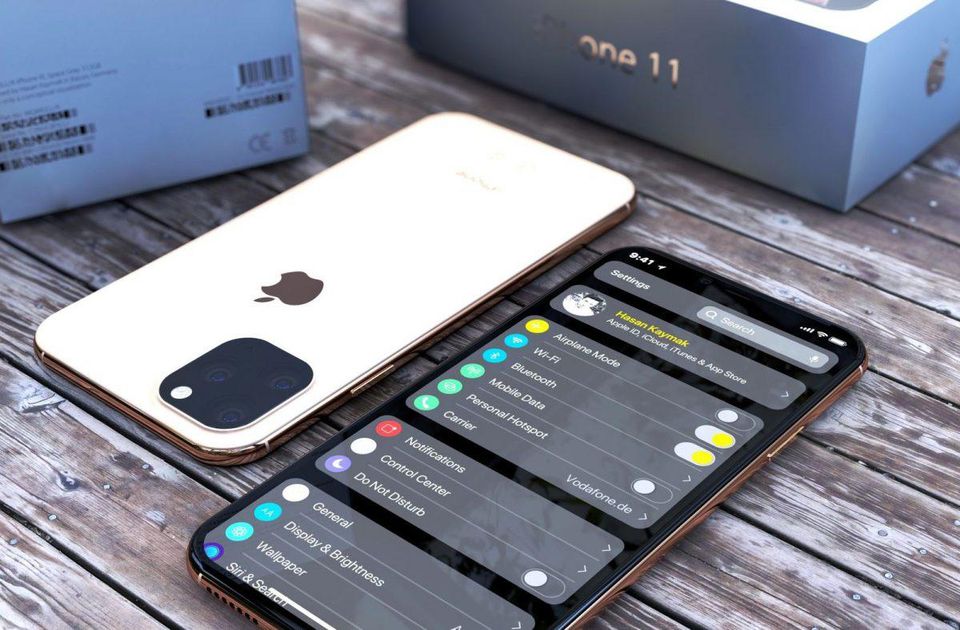In a press event in Cupertino, California on Tuesday, Apple launched its trio of iPhones: iPhone 11 Pro Max and the iPhone 11 Pro.
The phones feature a state-of-the-art video and still photography, triple cameras, and the powerful A13 Bionic processor. The iPhone 11, iPhone 11 Pro and iPhone 11 Pro Max start at $699, $999, and $1,099, respectively. Preorders begin Friday and they’ll be available in stores on Sept. 20.
As one of the most popular phones in the world, the new iPhones face a challenging market. With iPhone earnings falling 12% in the fiscal third quarter, profits expected to dip to $9.6 billion and more people trading in their iPhones for Androids, Apple’s new flagship phones will need to be compelling enough to draw in new customers or keep current customers interested. And of course, its main rival Samsung took the wraps off its Note 10, Note 10 Plus and Note 10 5G on Aug. 7, and the phones are looking pretty great thus far.
In comparison to last year’s models, the iPhones have a 12-megapixel front-facing camera that’s been bumped up from the 7-megapixel lens of last year. Each iPhone also has one extra rear camera compared to its 2018 counterpart.
iPhone 11 Pro Max and the iPhone 11 Pro begin at $ $699, $999 and, $1,099. These new iPhones pick up a fresh palette of colors, longer battery life and an A13 Bionic chip inside that guarantees faster performance. But it’s the camera hardware and software that take the role. There are three cameras on the back of the Pro phones and two on the rear of the iPhone 11.
This new versions of iPhones may offer various colors, but when it comes to the overall design, they look strikingly like last year XS, iPhone XR and iPhone XS Max — all and notch.
These three cameras on the rear of the 11 Pro and Pro Max are the biggest dangers in a series that plays it safe of Apple. For a lot of individuals, the iPhone represents the gold standard for smartphone design and cutting-edge features. But despite features, like support for Wi-Fi, the trio fails to push at the envelope, relying on refinements and the camera change to keep momentum up.
There’s no 5G carrier support (we expect this to come in 2020), and none of the inverse wireless charging that has been rumored to charge the Apple AirPods, Apple Watch and other phones of the back of the iPhone 11 — as possible with the Galaxy S10 and Note 10 phones.
Apple held back on features like creating the new iPhone 11s compatible with the Apple Pencil.
Without a suite of new features to tantalize buyers, Apple has its work cut out for it as it heads to 2020 and the hyper-competitive holiday season. Smartphones sales are down. Competitors like Huawei, Google, and Samsung are currently pulling on features and camera programs. And then there is the question of 5G — unless Apple surprises us before September 2020 iPhone users will have to wait.
iPhone 11 Series Comparisons
| Specification | iPhone 11 Pro | iPhone 11 Pro Max | iPhone 11 |
| Display | 5.8 inches | 6.5 inches | 6.1 inches |
| Resolution | 2436 x 1125 | 2688 x 1242 | 1792 x 828 |
| Processor | A13 Bionic | A13 Bionic | A13 Bionic |
| RAM | TBA | TBA | TBA |
| Storage | 64GB, 256GB, 512GB | 64GB, 256GB, 512GB | 64GB, 128GB, 256GB |
| Rear camera | 12MP (ultra-wide), 12MP (wide), 12MP (telephoto) | 12MP (ultra-wide), 12MP (wide), 12MP (telephoto) | 12MP (ultra-wide), 12MP (wide) |
| Front camera | 12MP | 12MP | 12MP |
| Battery | TBA | TBA | TBA |
| Water protection | IP68 | IP68 | IP68 |
| Wireless charging? | Yes | Yes | Yes |
| Ports | Lightning port | Lightning port | Lightning port |
| Weight (lbs) | 0.41 | 0.50 | 0.43 |
| Dimensions (in.) | 5.67 x 2.81 x 0.32 | 6.22 x 3.06 x 0.32 | 5.94 x 2.98 x 0.33 |
| Starting price | $999 | $1,099 | $699 |
Read More: Samsung Note 10 Review 2019
The iPhone 11, 11 Pro and 11 Pro Max go on preorder beginning Friday, Sept. 13 at 5 a.m. PT. They arrive in-store on Sept. 20. Apple will continue to sell the iPhone 8 for $449 and the iPhone XR for $599.

